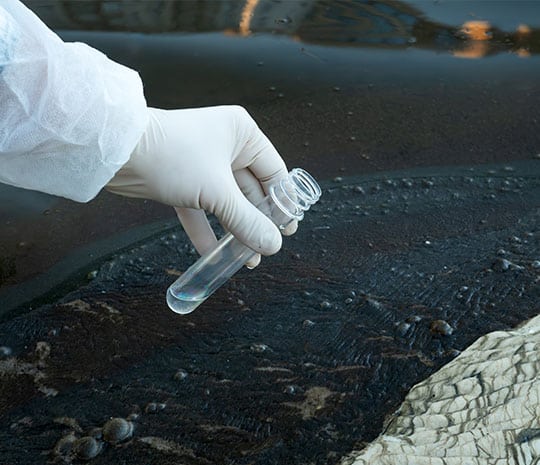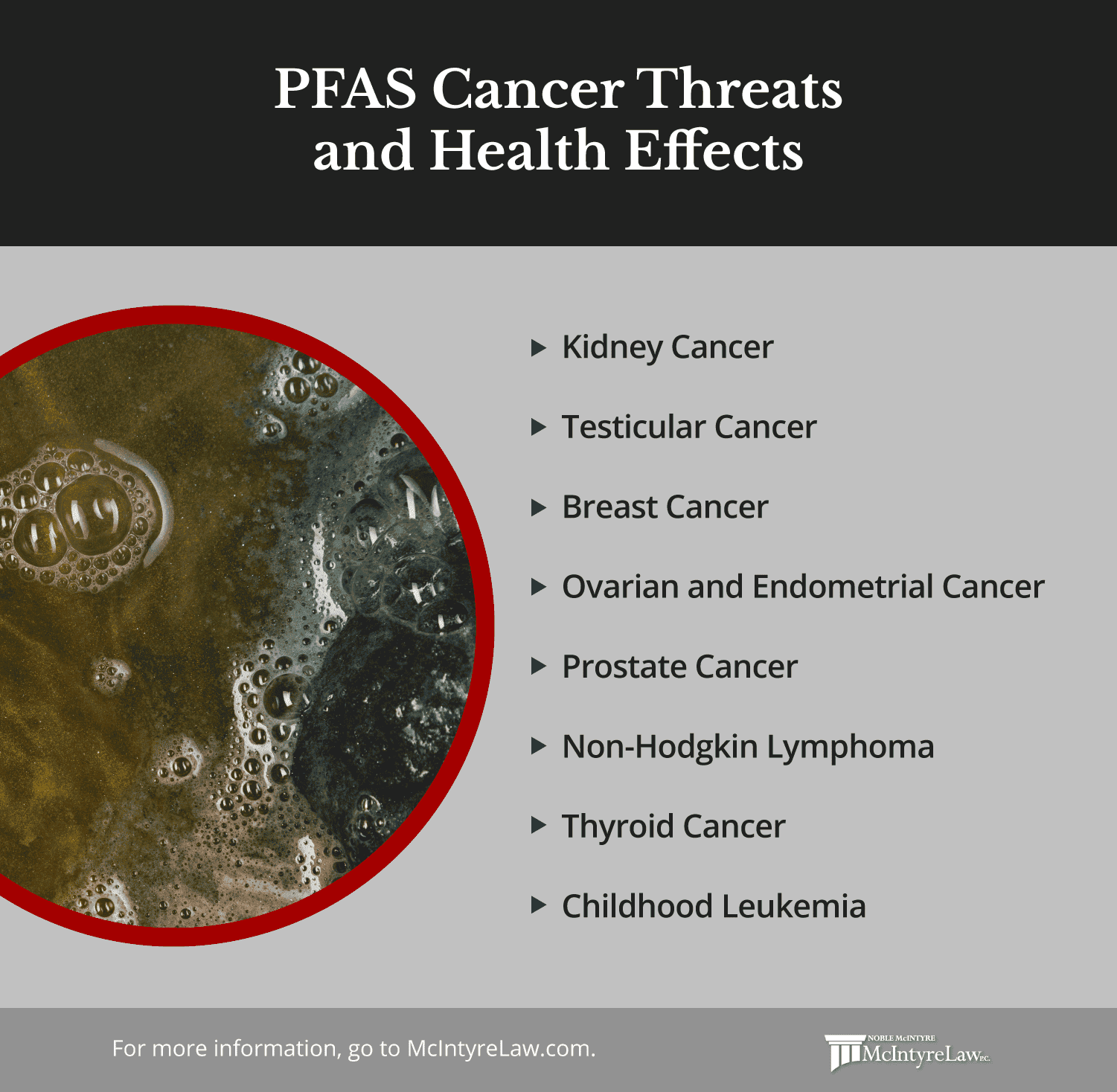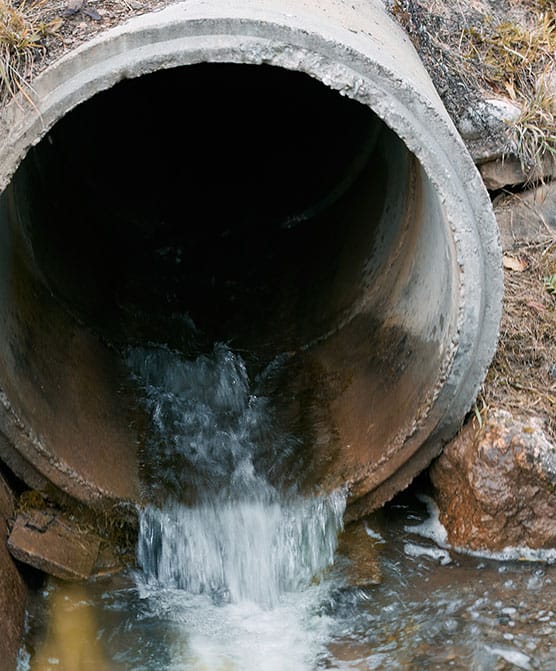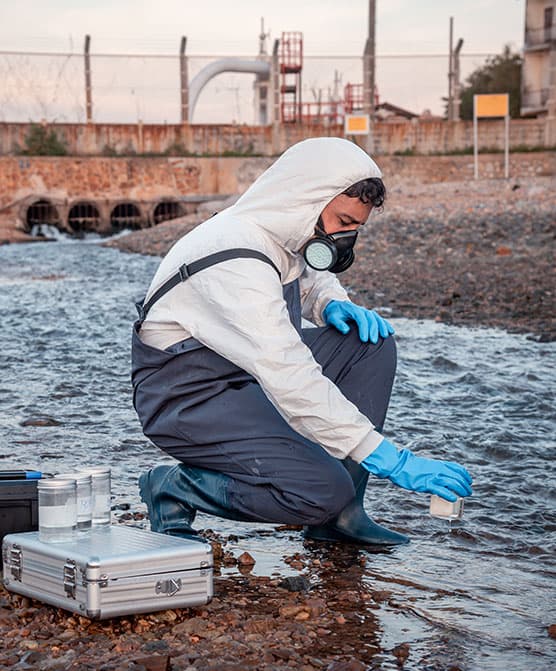PFAS Contamination Lawsuits
PFAS chemicals, widely utilized in various industrial and consumer products, have raised significant concerns due to their adverse effects on health. These substances, prevalent in items like non-stick cookware, waterproof clothing, and food packaging, have been linked to numerous health issues, including cancer, thyroid disorders, and reproductive problems. After disposal or use, PFAS chemicals persist in the environment and can contaminate water sources, posing risks to human health.
Military bases have been implicated in PFAS contamination, with numerous sites across the United States reporting elevated levels of PFAS in groundwater and drinking water sources. This contamination has raised concerns about the health of military personnel, their families, and nearby communities.
The first personal injury trial against manufacturers of PFAS chemicals began in March 2023. If exposure to PFAS chemicals has resulted in adverse health effects, such as PFAS-related illnesses or conditions associated with PFAS exposure, seeking immediate legal recourse is essential.
The legal team at McIntyre Law is dedicated to assisting individuals affected by PFAS contamination, providing guidance and advocacy to pursue rightful compensation.

What Are PFAS Chemicals?
PFAS (per- and polyfluoroalkyl substances) are a group of synthetic compounds known for their exceptional durability and resistance to degradation. These chemicals have been widely employed in numerous industrial and consumer applications. However, their persistence in the environment has raised significant concerns regarding the potential health risks they pose.
What’s in PFAS?
PFAS compounds consist of carbon-fluorine bonds, which are characterized by their strong and stable nature. These compounds often include a variety of fluorinated organic molecules, such as perfluorooctanoic acid (PFOA) and perfluorooctanesulfonic acid (PFOS). The chemical structure of PFAS resists degradation, making these chemicals difficult to remove from the environment once contamination has occurred.
PFAS Exposure Risks

PFAS and its constituent substances (PFOA and PFOS) are not only difficult to remove from the environment, but they linger in the human body as well. According to the National Cancer Institute, exposure to PFAS contamination elevates risk of a number of serious and potentially fatal conditions. The primary risks of PFAS exposure are:
- Childhood leukemia
- Kidney cancer
- Testicular cancer
- Breast cancer
- Ovarian and endometrial cancer
- Prostate cancer
- Non-Hodgkin lymphoma
- Thyroid cancer

Working with McIntyre Law
At McIntyre Law, we believe those who have been exposed to PFAS contamination on the job or through contaminated groundwater deserve compensation from those who profited by the production and use of these dangerous chemicals.
Our attorneys have decades of experience and are willing to fight for you and your family until you receive compensation for medical bills, lost wages, and pain and suffering.
Do you have a case for a PFAS contamination lawsuit?
If you’ve tested positive for the presence of PFAS chemicals in your blood, you are eligible to join the class of plaintiffs harmed by this product. These chemicals don’t exist naturally in the environment, so their presence in your blood automatically implies that you were harmed by the company that released them into the environment.


Is there currently a PFAS class action lawsuit?
Multidistrict litigation (MDL) in PFAS contamination lawsuits is underway as of 2023, with multiple trials scheduled for 2024.
Given the scale of contamination and the breadth of those responsible for manufacturing these chemicals, as well as operating facilities where they were used and released into the environment, there are multiple vehicles for litigating PFAS exposure lawsuits.
How is a PFAS class action lawsuit different from an individual case?
PFAS class action lawsuits involve the manufacturers responsible for the harm created by their product, including harm to future plaintiffs who have not yet developed an illness associated with PFAS exposure.
Individual cases are also underway for those who have already developed conditions associated with PFAS exposure. These cases may be filed against the manufacturers or against companies that used the products in a negligent manner and exposed employees and/or the community at large.

What to Know Before you File a Lawsuit
Navigating a legal claim like PFAS exposure demands meticulous preparation and an expert understanding of the legal process. A lawsuit involves demonstrating to the court that injuries or damages occurred, that those injuries were caused by the product, and that you used the product as it was intended.
This requires gathering all related medical records, including health care history and appointments. Veterans and active-duty service members may need to procure military medical and personnel records. Additionally, filing court paperwork is necessary to outline the case and initiate legal proceedings against the defendant.
Engaging the expertise of seasoned attorneys is essential in cases like these. At McIntyre Law, we’re here to put our experience to work for you and make sure you’re compensated for the injuries caused by exposure to PFAS contamination.
What is a contingency fee?
In a class action lawsuit, a contingency fee is an arrangement where the plaintiff’s attorney agrees to be paid only if the case is successful, typically receiving a percentage of the awarded damages. The plaintiff does not pay the attorney out of pocket. Instead, the attorney’s fee is deducted from the settlement or judgment obtained in the case.
The Oklahoma statute of limitations for PFAS lawsuits
The statute of limitations sets a deadline for initiating legal proceedings after the discovery of injuries. This time frame varies based on the nature of the case and the jurisdiction.
In Oklahoma, individuals have two years from the onset of symptoms linked to PFAS contamination to pursue legal action.
Compensation for PFAS contamination-related loss or suffering
Living with the consequences of PFAS exposure can be a financial burden, but pursuing legal action offers the possibility of recovering damages.
Veterans affected by military-related PFAS groundwater contamination, or who were stationed at bases associated with health issues like cancer, may also seek disability compensation.
Awarded compensation may cover various aspects, including medical expenses, lost income, future financial obligations, emotional distress, and miscellaneous expenses. If a family member has died of a PFAS-related illness, you may be able to file a wrongful death case to recover funeral costs and related losses.
Meet Our PFAS Contamination Attorneys
Our legal team is here to help you determine whether you were exposed to PFAS contamination, who is responsible for your injuries, and what type of legal case is right for your situation.

Noble McIntyre

Jeremy Thurman

Jordan Klingler

Monica Schweighart

Brenda Gómez O’Dell

Sarah Ramsey

Mario D’Angelo, Esq.

Daniel Zonas
Why are Military Bases Likely to be Contaminated with PFAS?
PFAS contamination around military bases primarily stems from the historic use of firefighting foams containing these dangerous chemicals. These foams, integral to combatting flammable liquid fires during training and emergencies, seeped into soil, groundwater, and surface water over time.
Additionally, routine military operations involving the handling, storage, and disposal of various materials, including fuels and solvents containing PFAS, contributed to environmental pollution.
Other sources of PFAS contamination
PFAS contamination isn’t limited to the area around military bases. Industrial and manufacturing facilities utilize PFAS in a number of civilian products, and improper handling can result in the release of these dangerous contaminates. Products that commonly use PFAS include:
- Industrial applications, including in the manufacturing of semiconductors and electronics
- Non-stick cookware (e.g., Teflon-coated pans)
- Stain-resistant carpets and upholstery
- Waterproof clothing and outerwear
- Food packaging (e.g., microwave popcorn bags, fast food wrappers)
- Personal care products (e.g., cosmetics, dental floss)
- Furniture treated with stain-resistant coatings
- Ski wax and snow gear coatings
- Electronic devices (e.g., smartphones, tablets)

